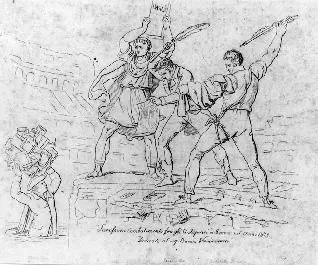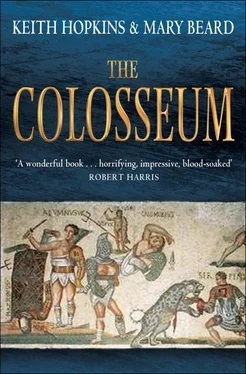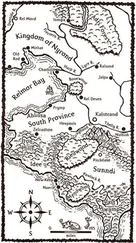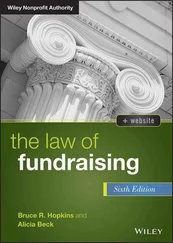Keith Hopkins - The Colosseum
Здесь есть возможность читать онлайн «Keith Hopkins - The Colosseum» весь текст электронной книги совершенно бесплатно (целиком полную версию без сокращений). В некоторых случаях можно слушать аудио, скачать через торрент в формате fb2 и присутствует краткое содержание. Город: London, Год выпуска: 2011, ISBN: 2011, Издательство: Profile Books, Жанр: История, на английском языке. Описание произведения, (предисловие) а так же отзывы посетителей доступны на портале библиотеки ЛибКат.
- Название:The Colosseum
- Автор:
- Издательство:Profile Books
- Жанр:
- Год:2011
- Город:London
- ISBN:9781846684708
- Рейтинг книги:3 / 5. Голосов: 1
-
Избранное:Добавить в избранное
- Отзывы:
-
Ваша оценка:
- 60
- 1
- 2
- 3
- 4
- 5
The Colosseum: краткое содержание, описание и аннотация
Предлагаем к чтению аннотацию, описание, краткое содержание или предисловие (зависит от того, что написал сам автор книги «The Colosseum»). Если вы не нашли необходимую информацию о книге — напишите в комментариях, мы постараемся отыскать её.
The Colosseum — читать онлайн бесплатно полную книгу (весь текст) целиком
Ниже представлен текст книги, разбитый по страницам. Система сохранения места последней прочитанной страницы, позволяет с удобством читать онлайн бесплатно книгу «The Colosseum», без необходимости каждый раз заново искать на чём Вы остановились. Поставьте закладку, и сможете в любой момент перейти на страницу, на которой закончили чтение.
Интервал:
Закладка:

In many of these old archaeological arguments one suspects that, if one had been a participant oneself, one would have been on what is now seen to be the wrong side. It frankly would have seemed far more sensible to dismiss this warren of walls as a medieval insert and to imagine all the activity in the Colosseum – land- or water-based – taking place on the firm ground underneath it (after all, because of the flooding which put a stop to the excavations, Fea did not know exactly how deep the substructures went). An arena floor perched on a web of rough masonry would have seemed a very odd idea indeed. We have a strong feeling that in 1814 we would have been with Fea (just as we would probably have been with the Cambridge Professor of Greek Richard Jebb, who at the end of the nineteenth century dismissed some of the prehistoric remains excavated by Heinrich Schliemann at Mycenae as a Byzantine slum). But whatever the strength of the arguments on all the different sides, this Colosseum controversy is distinctive for highlighting the problems of interpreting the building that have not significantly changed over 200 years. The issue still is how do you stitch together the different forms of evidence – literary, archaeological, as well as ‘common sense’ views of how the building must have been used – which do not actually quite fit. Can you massage away the contradictions? With all our more extensive knowledge of the structure of the Colosseum and more sophisticated archaeological dating techniques, the modern orthodoxy is still a version of the Pacifier’s compromise: that the substructures are ancient, but were not in place at the very beginning of the building’s history. The arena floor was elevated at its current height, but more simply – so allowing Dio’s claim about naval battles to be right.
But was Dio right? For all the up-to-date careful analysis and new discoveries (including what appear to be patches of waterproofing on the surfaces of the cavity below the level of the arena), we still do not know. It partly depends on how grandly to interpret the spectacular Dio refers to: large boats manoeuvring on a substantial depth of water, or a rather more Toy Town affair in an overgrown paddling pool? But more than that, it depends on a good answer to the question of water supply. Even with the paddling-pool model, we are not sure how the space of the arena could have been filled with water, and drained again, at reasonable speed. One suggestion, which involves using sluice-gates and backflow water from the Tiber, would also have had the effect of bringing quantities of sewage into the arena along with the water. Hardly the image of lavish and luxurious spectacle that Martial’s poetry would have us believe. Certainly a naval battle with a difference.
PLANS AND SPECIFICATIONS
For the design of the Colosseum, water was mainly a problem in a quite different sense. It may be hard to see now how any spectacular sequences of flooding and draining were arranged for the shows. But on a day-to-day basis the pressing issue was how to prevent the Colosseum as a whole, constructed as it was in a river valley, reverting to the lake that the site had been under the emperor Nero. Besides, the building itself acts as a huge water barrel: rainfall on the seating and arena, sometimes torrential, has to be drained away, otherwise up to 175 litres of water a second would accumulate during a heavy storm. One of the most extraordinary – albeit unseen – achievements of the Colosseum’s designers is to have arranged the drainage. Recent archaeological work on the water system has revealed an intricate network of underground drains, around and through the centre of the monument. The ring drain in fact runs 8 metres below the valley floor and takes the water off to flow into the Tiber. Before they even thought about the foundations, the designers had expertly arranged the site’s hydraulics. Obvious as it is, this raises the question of the architectural and constructional skills necessary for such a huge enterprise. Or to put it as most visitors would when they confront this vast structure: how on earth did the Romans build it?
The usual answer is to stress the combination of vast quantities of slave labour (skilled and unskilled), long traditions of practical craftsmanship and a high level of technical and theoretical architectural expertise on the part of the principal designers. That is broadly correct. We can deduce from a minute examination of the Colosseum’s structure and dimensions how an over-arching plan of considerable sophistication (though, at the same time, drawing heavily on traditional designs) was executed by teams of more or less expert workmen.
Part of the trick was to use, and adapt, relatively simple ratios and standard units. It seems that the ideal ratio of length to width for the arena itself was 5:3. According to one plausible recent reconstruction, the original plan for the Colosseum was to have an arena 300 Roman feet long by 180 Roman feet wide. The convention, as we can observe in other amphitheatres, was to make the width of the auditorium equal to the width of the arena, which would have given a total length of 660 Roman feet (300 + 360), a total width of 540 Roman feet (180 + 360) and a circumference to the whole building of 1885 Roman feet – as an architect could have calculated through relatively simple trigonometry. Did this matter? Yes, because the size of the perimeter intimately affects the design and number of the external arches. A grand amphitheatre had to have a number of grand entrances and the convention, it seems, was for the arches of those entrances to be 20 Roman feet wide (a convention that would have made it easier to instruct the artisans). The Colosseum was to have eighty arches, which – if the 20-Roman-foot standard was to be preserved and allowing for the width of the columns themselves – meant reducing the perimeter slightly, to 1835 Roman feet. This was achieved by leaving the size of the auditorium, and so of the audience capacity, intact, but reducing the size of the arena to 2802 × 168 Roman feet (still in the ratio 5:3). In other words, the architects balanced the need for size and scale against the desire to work to simple and familiar ratios and intervals.
This meant that on the ground they could leave teams of artisans and their foremen with a clear plan, which would not need much hands-on supervision from the overall designer. We can see by examining the individual arches on the exterior how much the details of execution could vary from example to example. The vertical jointing patterns are quite different from pier to pier, presumably reflecting variety in the size of travertine blocks delivered from the quarries or sawn on site, and measurements that were not crucial to the overall structure could differ from arch to arch by as much as several centimetres. Likewise it seems that in the design and building of the stairways, the individual teams and perhaps under-architects had a good deal of independence. On the other hand, the voussoirs in the arches – crucial to the stability of the structure – are close to identical, and the outermost annular corridor on the ground floor is 5 metres wide and varies along its entire length by less than 1 per cent. Where it mattered, Roman architects or their design team could ensure absolute precision from their workforce.
Читать дальшеИнтервал:
Закладка:
Похожие книги на «The Colosseum»
Представляем Вашему вниманию похожие книги на «The Colosseum» списком для выбора. Мы отобрали схожую по названию и смыслу литературу в надежде предоставить читателям больше вариантов отыскать новые, интересные, ещё непрочитанные произведения.
Обсуждение, отзывы о книге «The Colosseum» и просто собственные мнения читателей. Оставьте ваши комментарии, напишите, что Вы думаете о произведении, его смысле или главных героях. Укажите что конкретно понравилось, а что нет, и почему Вы так считаете.












